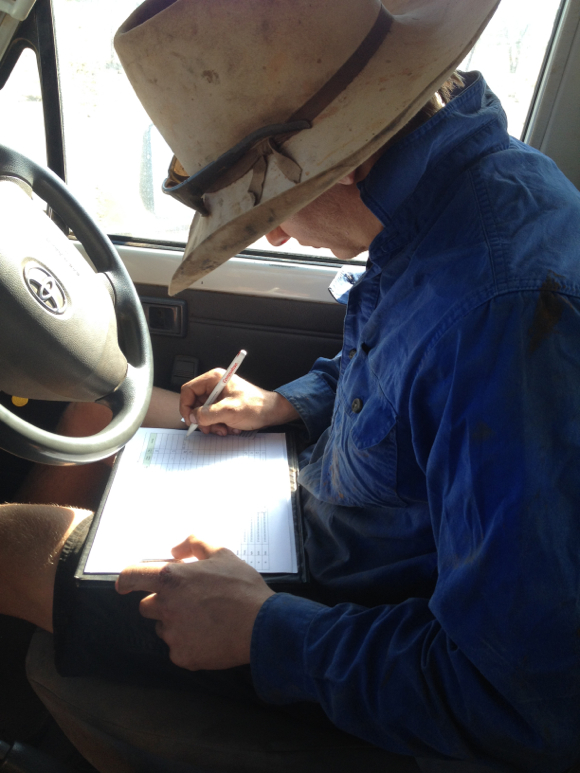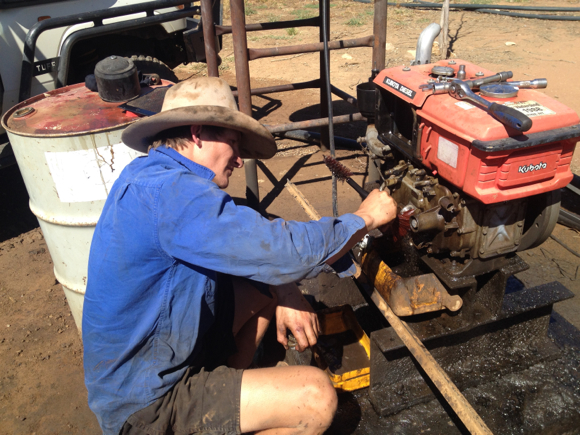Life’s a bore
Host: Newcastle Waters
Written by Steph Coombes.
What comes to mind when you think of cattle stations?
Jackeroos and Jillaroos covered in sweat and dust, mustering thousands of cattle on horseback? The crackle of a two-way radio as the helicopter buzzes in the sky? The sizzle of a branding iron and the noise of cattle moving through the yards?
Amongst all the campfire stories of wild beasts that broke from the mob, machinery that first year jackeroos returned to the mechanic in various states of disrepair, and the skill (or lack thereof) the camp cook, there is a member of the station crew who often goes unmentioned – the faithful old bore runner.
If you travel beyond the homestead gates and past the cattle yards, the station may appear to be peacefully quiet and uninhabited. If you travel further down the track, eventually you will hear the gentle humming of a motor.
Day after day, all year round, these motors work to pump water, the lifeblood of all cattle stations, from below ground to tanks, turkey nests, and watering troughs across the station. It is the primary job of the bore runner to ensure these motors keep a constant supply of fresh clean water to the cattle.
There are two bore runners on Newcastle Waters due to the sheer size of the property and the number of cattle – approximately 66,000 head of cattle spread over one million hectares. Jimmy (22) looks after the western side of the station, maintaining the 22 motors that pump water to 61 watering points. These 61 watering points are divided into three areas or “runs” as it would be physically impossible for Jimmy to cover that amount of ground in just one day, let alone undertake any maintenance or repairs.
Jimmy is up before daylight with the rest of the station staff, and his first job is to fuel up his vehicle which has been fitted with a 450 litre diesel tank and metered pump. On just the southern ‘run’ Jimmy will make a 300km round trip and transfer the majority of the diesel on board into the motors.
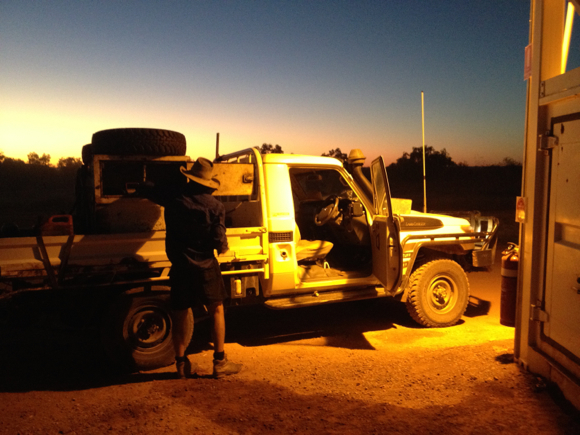 Jimmy preparing to fuel up his motor car and the diesel tank on board.
Jimmy preparing to fuel up his motor car and the diesel tank on board.
Each motor pumps water to more than one watering point. Each watering point has a trough for the cattle to drink from, and either a large tank or a “Turkeys nest” to store the water which has been pumped (a Turkeys nest is an above ground dam made from rammed earth). As he arrives at each point Jimmy’s first job is to check the level of the tank/nest. Depending on the water level, Jimmy will then decide how much fuel to put into the motor. The tank/ nest is also checked to make sure the water is clean and that no big branches or leaves etc., have built up and can cause a problem in the pipes and nothing is contaminating the water.
 Jimmy observing the water level of a Turkeys nest.
Jimmy observing the water level of a Turkeys nest.
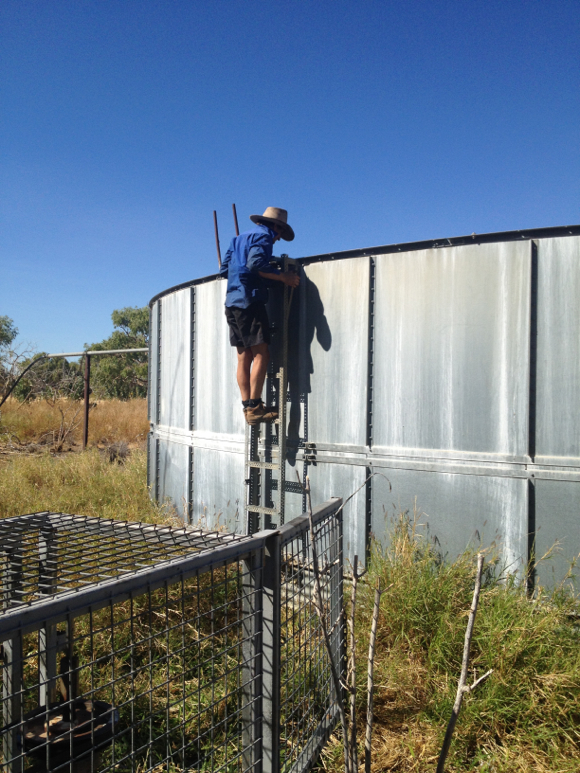 Checking the water level of a tank.
Checking the water level of a tank.
Once the motor has been refuelled, it must be given a “pre-start check” before being started so ensure the oil and water levels are correct. Then the motor is turned on and left to pump water until it runs out of fuel. The motor is given enough fuel to increase the water level to the point where it can comfortably supply all the cattle that rely upon it until Jimmy returns in a couple of days.
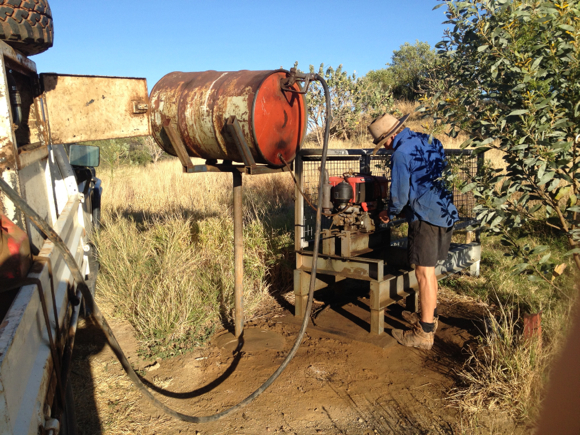 Jimmy doing a pre-start check on the motor at Hicketys bore.
Jimmy doing a pre-start check on the motor at Hicketys bore.
Before driving off to the next watering point Jimmy fills in a record sheet of each bore run, noting the amount of fuel he used, the level of the tank/nest when he arrived, if any cattle were at the trough when he arrived and if so how many, if any dead cattle were found (if so they are to be dragged far away from the watering point) and any general notes and observations.
Every 200 hours (approximately) each motor is serviced, where the old dirty oil is drained and replaced with new clean oil, and the fuel/oil and air filters are cleaned. Because of the number of kilometres he travels, the bore runners motor car is also serviced every two weeks.
On the odd occasion though the are some repairs that need to be made too . . .
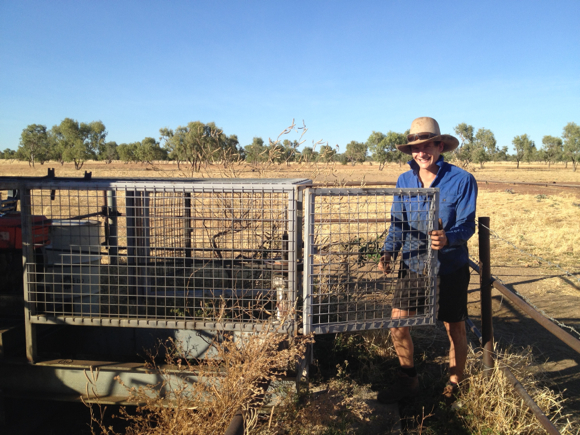 Jimmy after replacing the belt on a bore. Every bore is covered by a cage for safety purposes. The moving belt is by far the most dangerous part on the bore, and any maintenance or repairs on the bore is only to be undertaken when the motor is turned off and the belt is no longer in motion.
Jimmy after replacing the belt on a bore. Every bore is covered by a cage for safety purposes. The moving belt is by far the most dangerous part on the bore, and any maintenance or repairs on the bore is only to be undertaken when the motor is turned off and the belt is no longer in motion.
Just like in your motor car, the bores also have a belt which will eventually become worn out and need replacing. Another job which may need doing is called “repacking the bore”. The shaft that moves up and down a cylinder to pump water is sealed at the top to stop the water from spilling out. Occasionally the seal will need to be replaced with a clay-like material to stop water from leaking.
As Jimmy can only do one bore run at a time, often the station pilot will do a “flying bore run” to check and record the water levels of the tanks and nests which are not being checked by the bore runner that day.
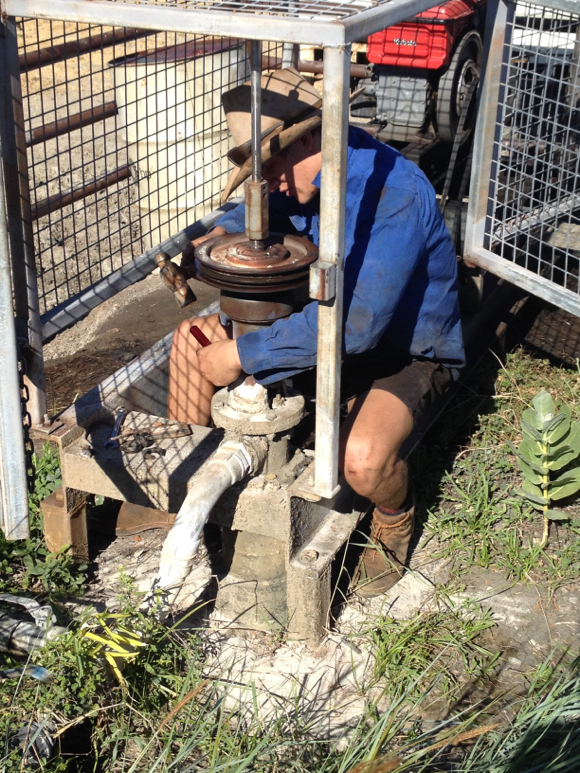 Chipping out the old clay before repacking the bore. Note: the belt has been taken off the bore and the motor is turned OFF during this process.
Chipping out the old clay before repacking the bore. Note: the belt has been taken off the bore and the motor is turned OFF during this process.
According to Jimmy there are a couple of things that are important to have on any bore run . . .
- A good playlist, and a LONG playlist. When most of your day is spent driving you want to make sure you’re not listening to the same songs over and over again.
- Your phone or a camera as you never know what you might see out here . . . wild dogs and cats, snakes, swans . . . cattle! It’s also handy in case you see something that you want to show someone back at the station which may be hard to explain – a damaged fence, a busted pipe, or something broken on the bore.
- Lunch! Once you leave those homestead gates in the dark of the morning, more often than not you won’t be going back through them until it’s close to dinner time!
- Plenty of rags to wipe your hands on – you’re bound to get covered in dirt, diesel, and oil throughout the day
- Tools and spare parts – to fix motors, bores, water troughs, fences, and just about anything you will pass on a bore run
- A passenger . . . otherwise known as a gate opener!
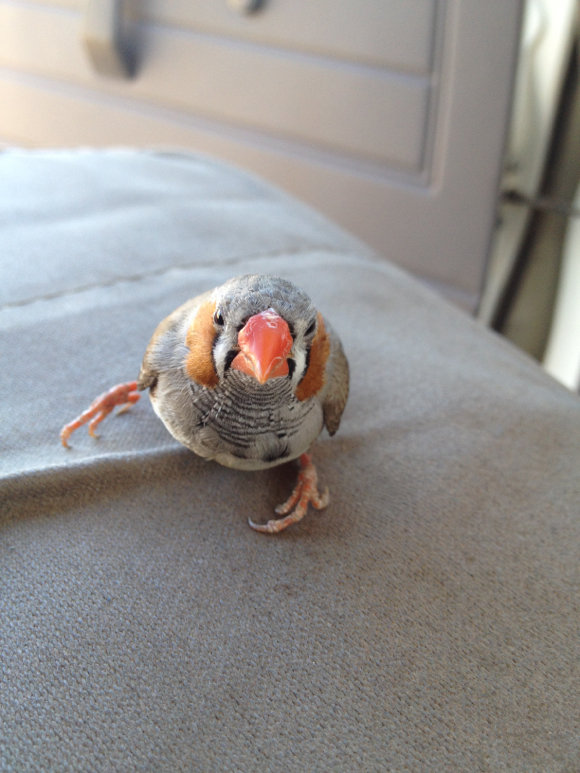 This little Finch flew into the vehicle one day and got knocked out for a couple of minutes – he only posed for the photo because he was still half dazed!
This little Finch flew into the vehicle one day and got knocked out for a couple of minutes – he only posed for the photo because he was still half dazed!

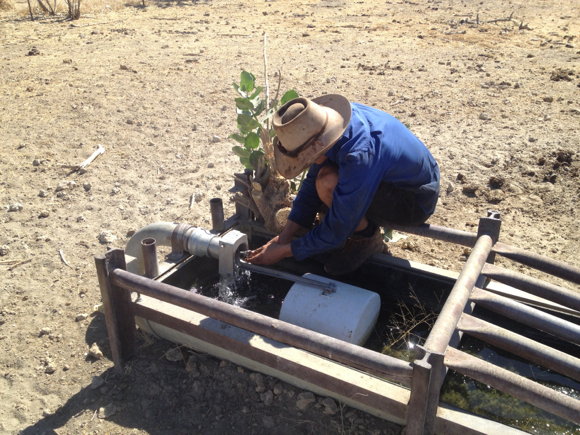
As you can see, the job of a bore runner is much more than just turning on motors and checking water levels. They are the eyes and ears of the station, the unofficial “overseer”. Managers rely on the bore runners to keep an eye on the condition of not only the watering points, but the fences, roads, supplement and most importantly the cattle, as they are often in the cattle yards or the office.
Life as a bore runner is anything but a bore!

